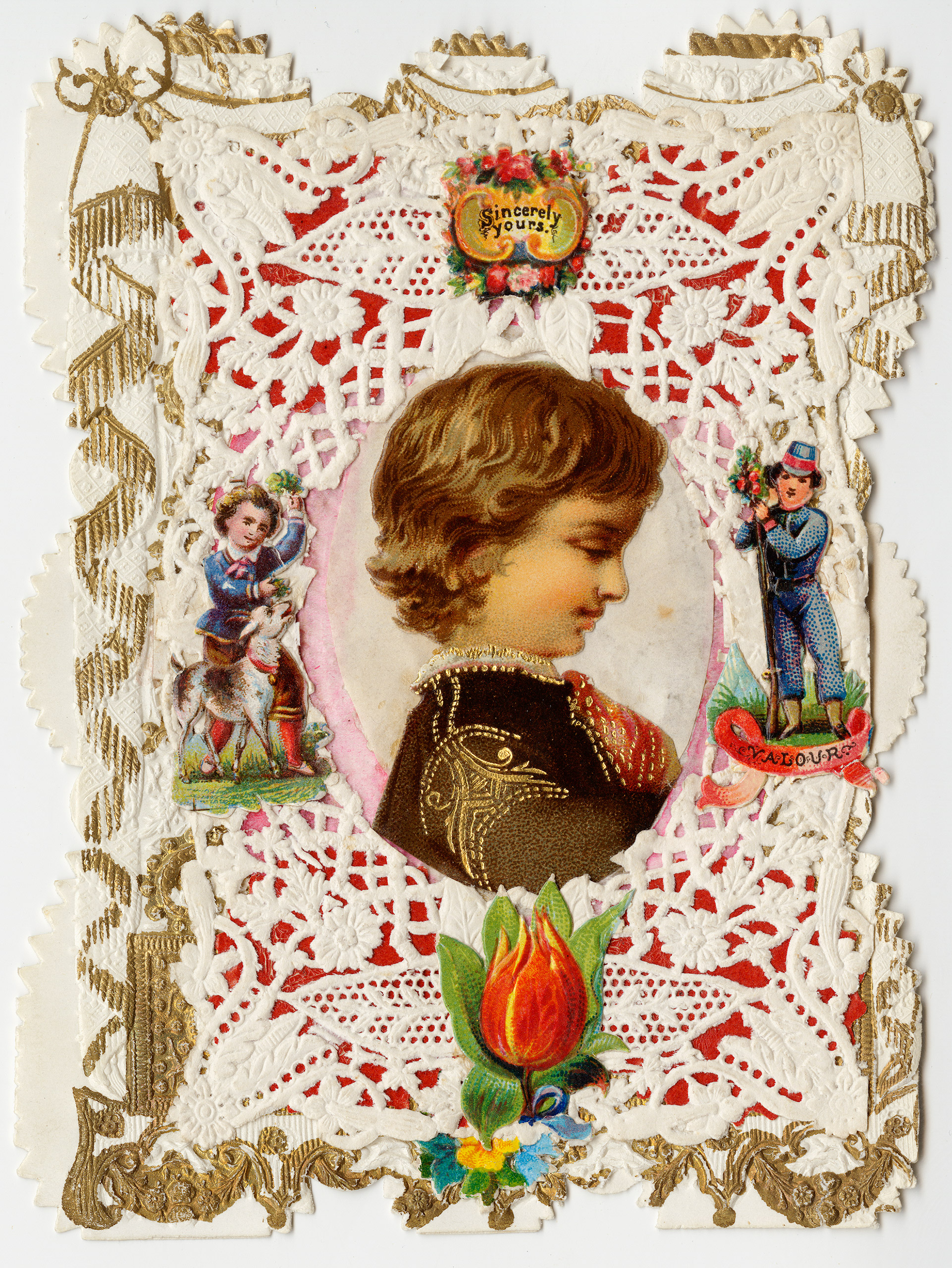
For the artistry of her designs and her success at commercializing Valentine’s Day cards in the U.S., Esther Howland became known as the “Mother of the American Valentine.” Her distinctive cards are cherished by collectors to this day.
Howland did not invent the Valentine’s Day card — handmade versions had been circulating in Europe since at least the 15th century, and by the early 19th century, the U.K. was producing significant numbers of commercial valentines. In that period, however, American valentines frequently were comic rather than romantic. Often ethnically pejorative and personally insulting, these types of cards — many of them sent anonymously and with malice — were far removed from the sort of sentiment Esther Howland had in mind.
Born in 1828 in Worcester, Mass., she entered a family of comfortable means, as her father, Southworth Howland, owned a successful stationery business that produced such items as textbooks and engraved cards. She attended nearby Mount Holyoke College (then known as the Mount Holyoke Female Seminary).
Around the time she graduated, she came across valentines imported from England. They were beautiful, but also very expensive. Howland thought that she could make cards of comparable beauty for a considerably lower price. So she set to work. Her brother, who worked as a salesman for their father’s company, agreed to show samples of her initial creations to potential clients. He returned from his sales trip with numerous orders.
Hiring a crew of local girls, she set up shop in the Howland family home, converting the third floor into a miniature assembly line. Under her oversight, the workers glued together layers of colors and textures. Gilded lace and arrangements of wafer paper made the cards three-dimensional and lifelike. Such ornaments as cupids and flowers were often pasted onto the cards, the centers of which might feature images of frolicking couples or a girl with a bouquet. Most of her cards bear some kind of marking – such as a red letter “H” on the back – to indicate the designer.
“No other producer of commercial valentines understood so well their potential for the tactile communication of complex feeling,” writes Barry Shank in his book A Token of My Affection: Greeting Cards and American Business Culture. Be the sentiment amorous or platonic, Howland had created the nation’s best visual correlative for the words, “I love you.”
She not only had the aesthetic gifts to convey sentiment but also the business acumen to market it: Multiple accounts hold that, during the 1850s, Howland earned $100,000 annually (about $3 million in today’s money). Though she sold many pricier cards, some of her handiwork could be purchased for as little as five cents, making cards affordable to the amorous masses.
A fine example of independent womanhood in the 19th century, Howland is described as being audacious enough to travel “without a chaperon” and also was among the “first employers to pay women a decent wage,” as described by Michele Karl in her book Greetings With Love: The Book of Valentines. The New England Historical Society describes Howland as “an aristocratic woman with high color and glossy chestnut hair” who “drove high-stepping horses, dressed fashionably and had facials.”
In 1866, Howland, then in her late 30s, suffered a debilitating knee injury, as reported in a 2007 Worcester Sunday Telegram article. From a wheelchair, she continued to conduct her business, which was incorporated as the New England Valentine Company. In the late 1870s, she released a small book of valentine verses, so that if customers liked the artistry of a particular card but didn’t think much of the verse printed within, they could cut out a more suitable verse from the book and affix it inside the card.
In either 1879 or 1880, she sold her enterprise to the George C. Whitney Company (also of Worcester) in order to attend to her ailing father, who died in 1882. The Whitney Company, after absorbing Howland’s business, would become the world’s largest manufacturer of valentine cards. It ultimately had to liquidate in 1942 amid a paper shortage caused by World War II.
As for Howland, who died in 1904, she left behind a legacy as a brilliant commercial artist and a pioneer in the commercialism of a day that is now, to many, obscenely so. In 2016, Americans spent about $20 billion on Valentine’s Day, according to the National Retail Foundation. The Greeting Card Association reports that Valentine’s Day, with 145 million cards (not counting classroom-made valentines) sent each year, is the nation’s largest card-sending day next to Christmas.
There is no evidence that the “Mother of the American Valentine” ever had any romantic attachment. The cards she created, however, gave expression to the sentiments of lovers far and wide.
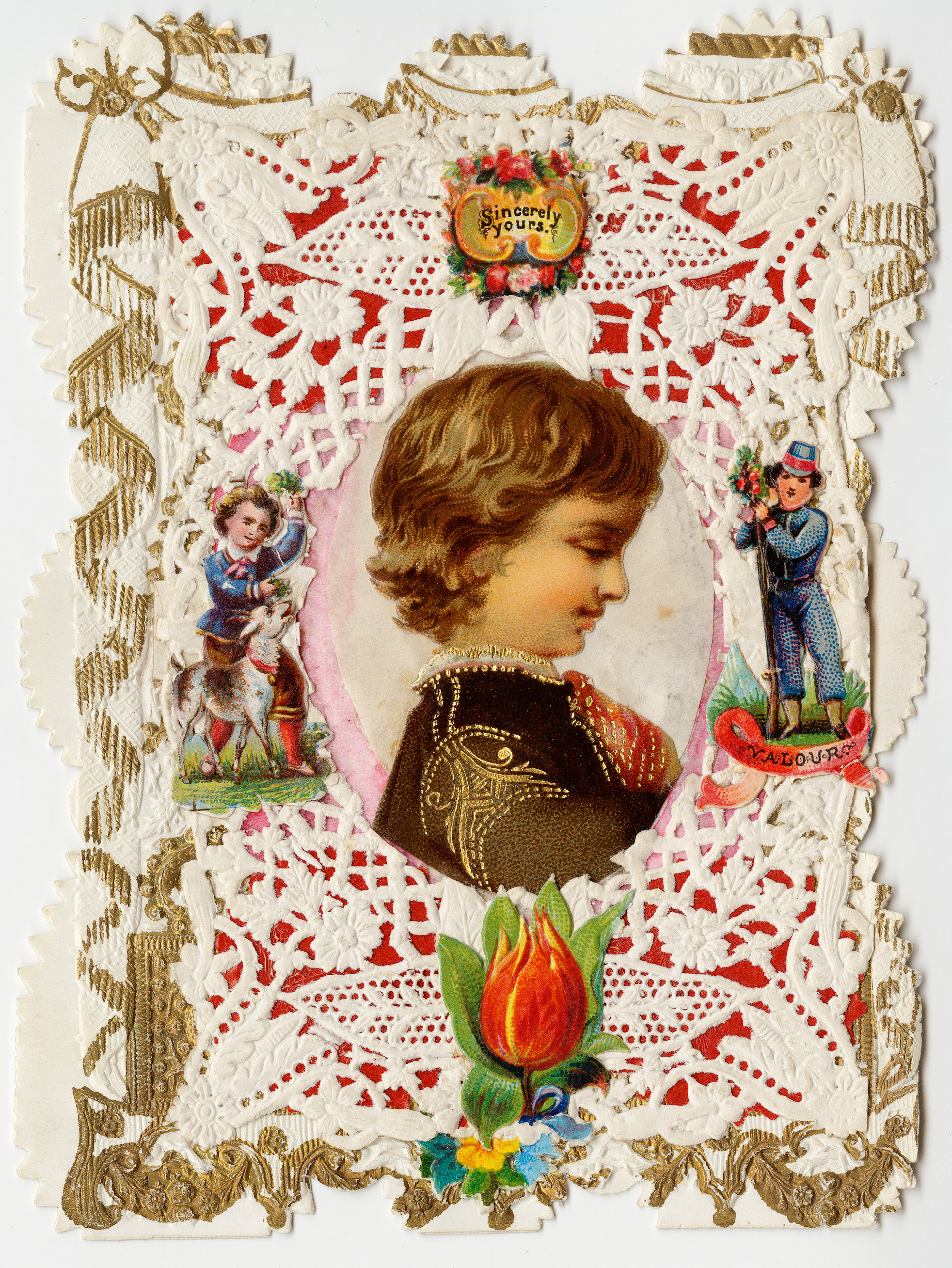
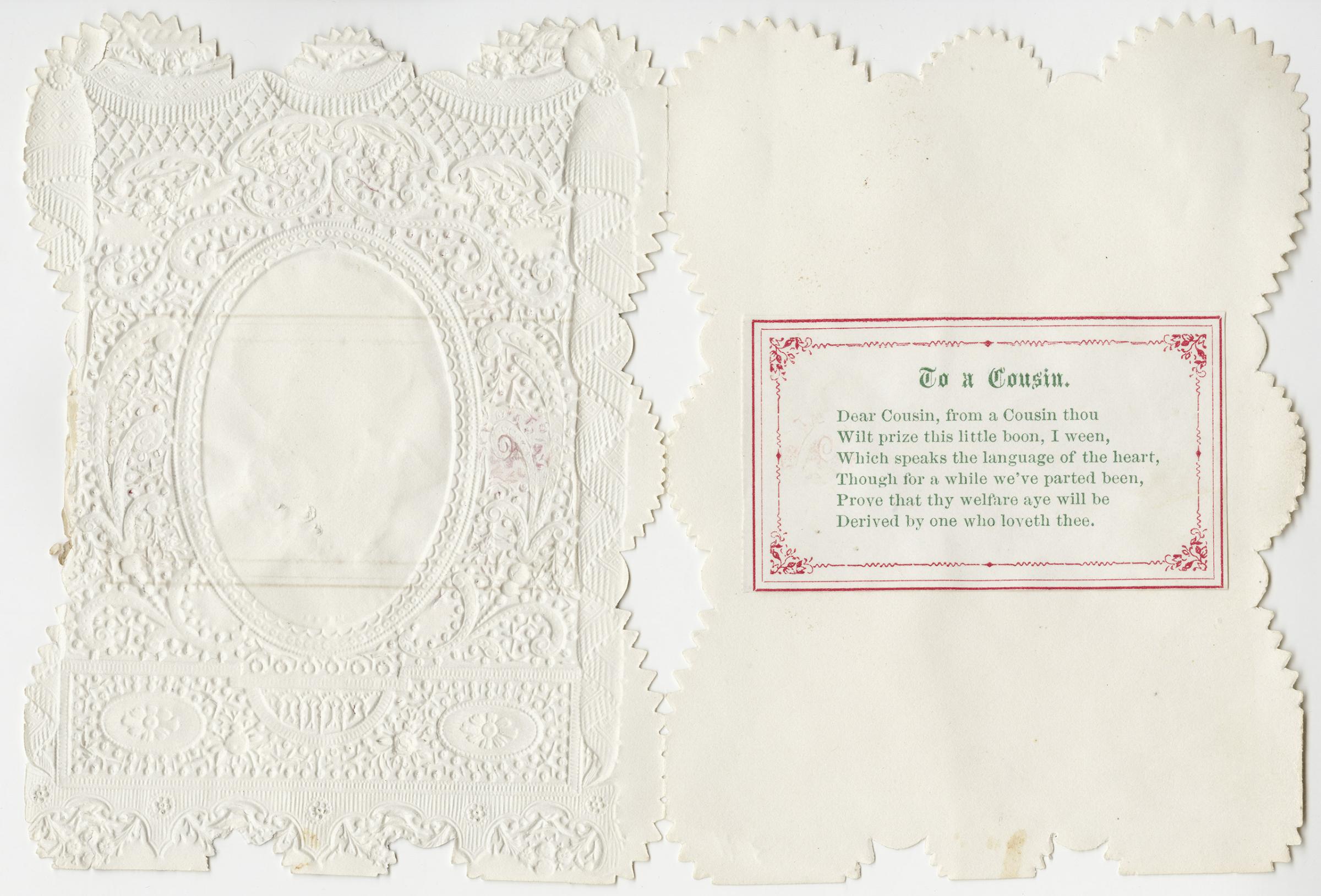
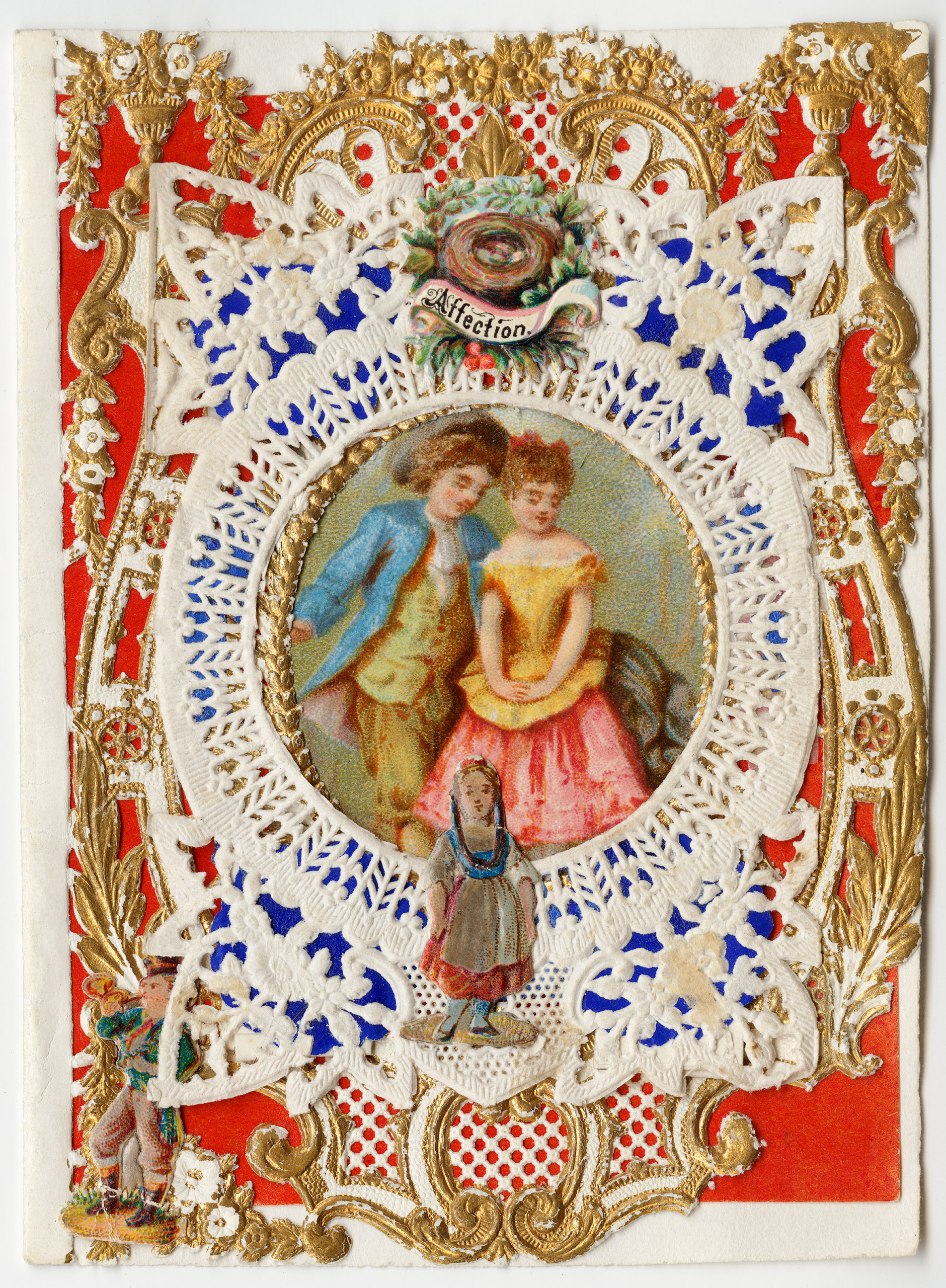
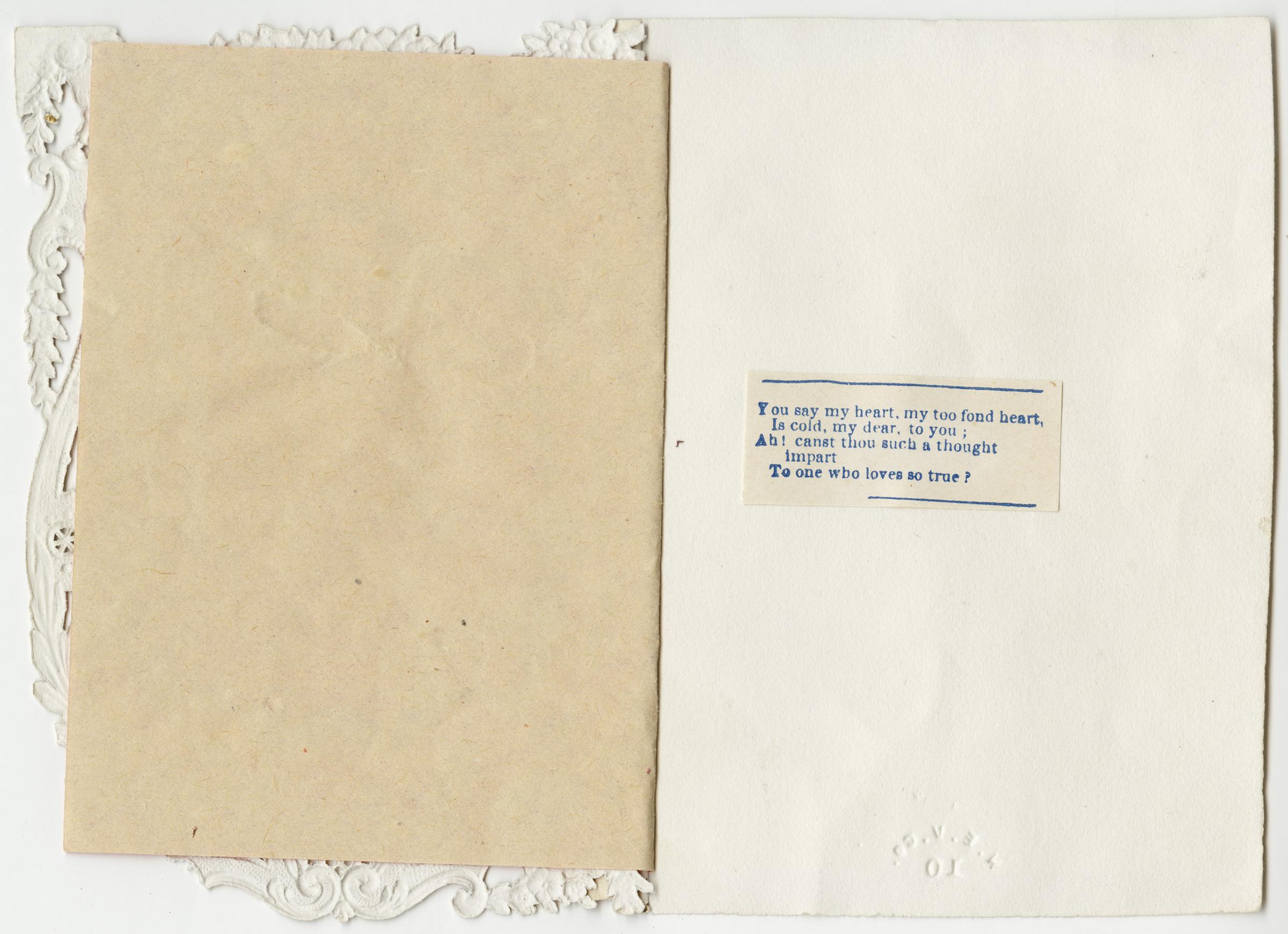

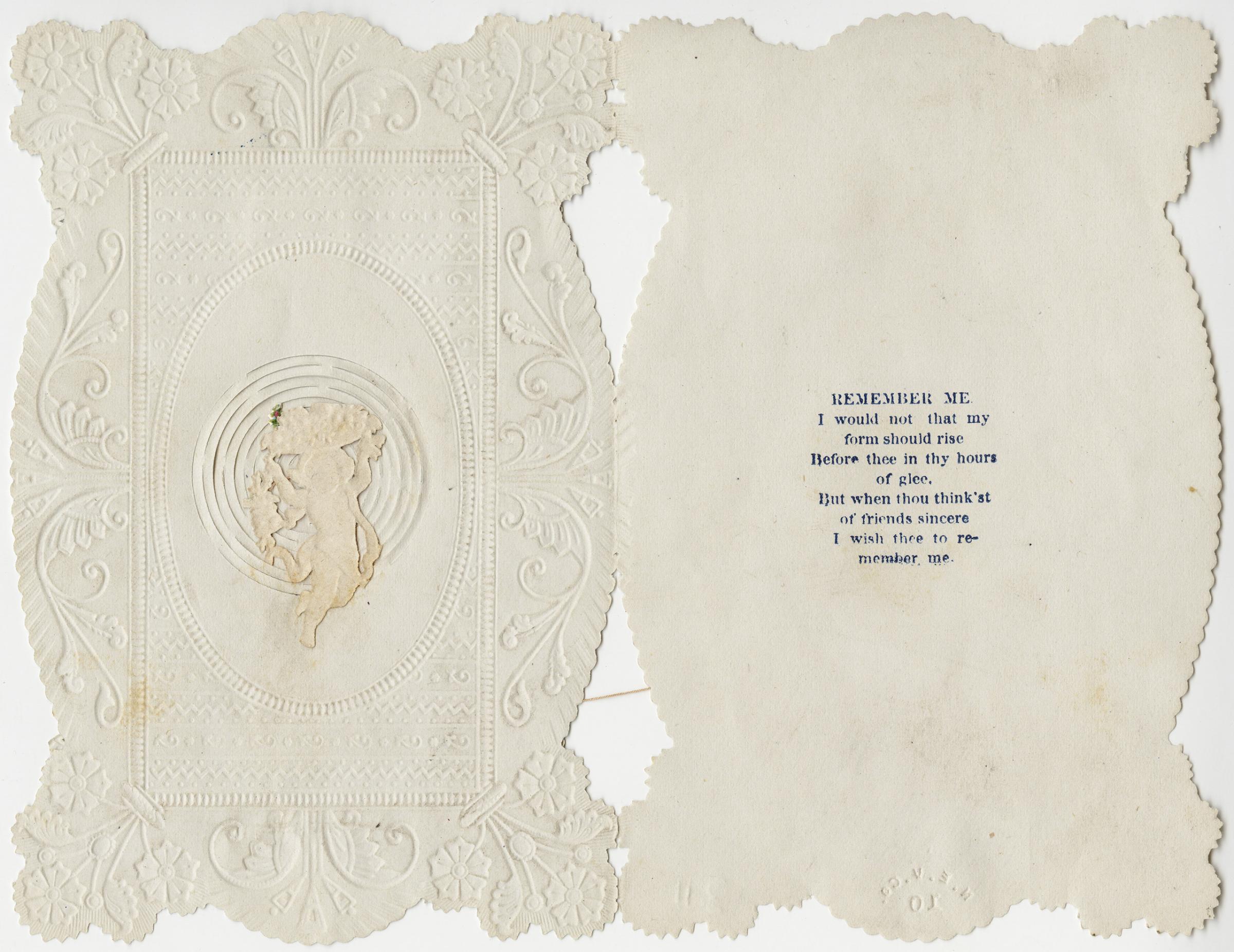
More Must-Reads from TIME
- Breaking Down the 2024 Election Calendar
- How Nayib Bukele’s ‘Iron Fist’ Has Transformed El Salvador
- What if Ultra-Processed Foods Aren’t as Bad as You Think?
- How Ukraine Beat Russia in the Battle of the Black Sea
- Long COVID Looks Different in Kids
- How Project 2025 Would Jeopardize Americans’ Health
- What a $129 Frying Pan Says About America’s Eating Habits
- The 32 Most Anticipated Books of Fall 2024
Contact us at letters@time.com